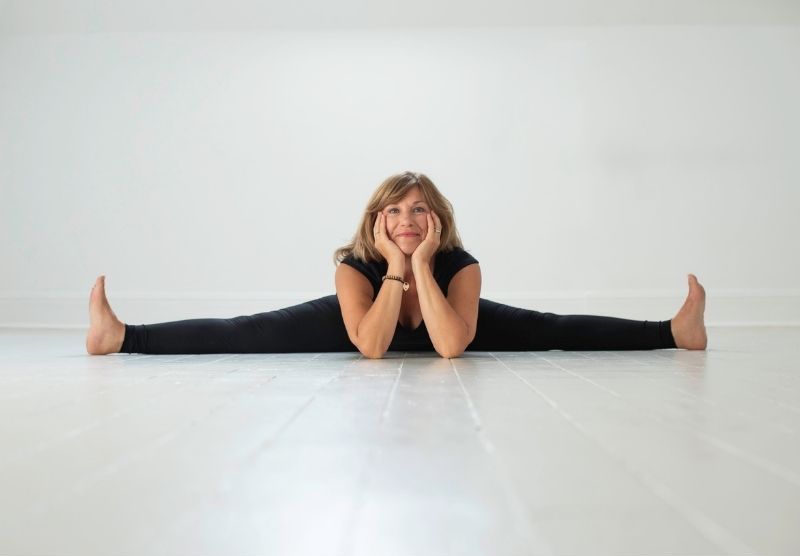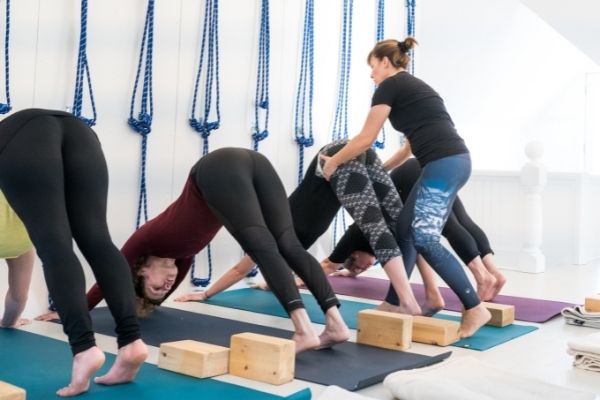Do you think yoga is medicine? I do.
We are heading into the most difficult change of seasons here in the Northern Hemisphere. The one that will take us from Fall to Winter. During the change of a season, when our immune systems can become somewhat compromised and respiratory issues can come to the surface, practising yoga becomes the yogi’s medicine or tonic.
If you are reading this blog, you probably already know that it is imperative that we take care of ourselves and that we personally hold the keys to our health and well being in our hands. In relation to this, yoga is a wonderful tool to have in our tool kit. It empowers us with all kinds of options to address whatever situation may arise – be it physical, physiological, psychological or any combination therein. Because, let’s face it, it’s never just one thing!
Other tools to get or maintain optimal health consist of what we eat, how we absorb what we eat, how we sleep, how active we are, how much time we spend in the natural world and how we interact and live in community with others.
Prashant Iyengar often refers to yoga asanas as prescriptions (medicine) and, just like a prescription, the way in which we use it is extremely important – if we want it to be effective. Therefore, based on our needs and current state of being, the dosage of the asana is crucial. One of the most beautiful things about yoga, especially for us modern practitioners, is that practising makes us more sensitive. We live in a world where sensitivity is seen as a weakness but it is sensitivity that is the yogi’s superpower.
When we cultivate sensitivity through practice, we become connected to our subtle selves and then we are able to glean an understanding of what we truly need for our practice to fortify us and lift us up or rejuvenate and pacify us. Sensitivity through practice also encourages us to be honest with ourselves. If we are feeling lazy and don’t feel like practising honesty means you get up and get moving and likely you will feel better as you bring some vigour into your body. If you are feeling exhausted it may mean that you need to slow down and do only a few poses mindfully, slowly and supported (even when the ego wants you to push through).
Yoga is a practice of opposites. It’s like a game I used to play with my son when he was young and I would say, “I don’t like you” which, of course, meant that I did. I still like to play this game with myself when I am commencing practice to uncover what it is that I really need to put my attention and intention towards.
If you’re a tight person, you may think you need to push through the tension and just keep going. If you’re the kind of person that folds easily, you may just roll up into a ball on the couch and feel like everything hurts and therefore you shouldn’t move. These examples are two extremes of course but there is a subtle knowledge and wisdom that resides within that we sometimes lose connection with in our busy lives with all the things going on around us, the news of the world, the news, near and far all the things that vie for our attention. Please understand that either of these two states is neither good nor bad, it just is. We need to take judgement out of it altogether.
I remember years ago when I was in India at the Iyengar Yoga Institute in Pune when Geeta Iyengar was conducting a class and she said that students generally come to the mat with one of two situations going on. The first situation would be that they feel lethargic. There’s a sense of lethargy (tamas/heaviness/dullness/inertia) and the second situation is that they are feeling fatigued. She made the distinction between lethargy and fatigue. She stated that most students are in the camp of lethargy. Meaning that they come to class and they start moving and they start to feel better and as the movements turn into actions and they find the rhythm of practice, the lethargy drops away from them.
The other group, however, the one that is experiencing fatigue, might actually feel even more depleted after having done a few rigorous poses to get ready for a class or practice. That is where the subtleties come in. How do we hone our sensitivities so that we can truly understand where we’re at when we stand on our mat.
One of the things I admire so much about Iyengar yoga is the sequencing that is targeted to address specific conditions or situations. Be they external, caused by the environment that surrounds us, or internal, caused by our own inner landscape. Let’s take a look at external environments. Fall weather is upon us and the transition from Fall to Winter is seen as the most challenging, in regards to maintaining a healthy immune system. As the weather has cooled down and the sun isn’t rising as early or staying around as long as it does in the summer, I have been turning to the immune sequence (one example of the myriad of immune practices is pasted above for your reference) for support and maintenance.
These artfully crafted sequences teach us how we can use yoga asanas like a prescription and work to understand what is the appropriate dosage? Just like any type of supplement, you might take, for example increasing your vitamin C, or vitamin D during the colder weather, you can’t just take one dose all at once. You have to take your yoga vitamins on a daily or consistent basis for them to be effective.
As yogis practising in a modern world, we have so much information available to us. It can be very helpful, but it can also be very overwhelming and we can try and fit ourselves into somebody else’s prescription and dosage, without truly understanding what our own might be. Yoga is a practice, and just like anything we practise we learn as we go. We learn from our mistakes and we learn from things that go well.
The sequence above depicts a number of asanas/poses that are threaded together to create an environment in which the immune system can be supported and rejuvenated. At first glance, these are just shapes meant to put the body into various positions in relation to gravity. What can’t be experienced from this image is the embodiment that occurs when we practise yoga. Stress is inevitable. It’s actually quite natural and the body, mind and breath can actually handle stress quite well. It’s the stress, however, that doesn’t abate or cease, which creates a challenge for our nervous system. When the nervous system is put under continued stress with no letting up, our immune system often pays the price.
One of yoga‘s greatest gifts to modern practitioners is its ability to give us the tools we need to navigate through all the different types of stress we experience. Whether that is stress that is natural and normal, day to day stress or whether that stress is continual and ongoing. The type of stress that starts to decrease the functionality of our immune system.
When I am feeling depleted due to any number of reasons including disruptions in sleep, excessive work or busyness, feelings of anxiety or depression, grief or sadness, recovery from a condition or illness, etc. I turn to the Immune practice for support and recovery. It has been a faithful companion that is always there for me whenever I need to reconnect with it. It’s my yoga prescription and I can determine the dosage based on what is going on in my life at any given time.
There are times when I’ve needed to practise the sequence every day for several days in a row. There are times when I place it into my regular practice once a week. And there are times when it will just present itself on a more infrequent scale and I insert it as needed.
The yoga sutras of Patanjali, sutra 2.16, remind us why we practise:
“Heyam dukham anagatam”
“The pain which Is yet To come Is to be avoided.”
Through practice and the cultivation of sensitivity and the awareness which is essentially Svadhyaya (self study or the study of the self) we learn how to avoid unnecessary discomfort. When you think of it that way, why wouldn’t we practise?
What is your favourite self care sequence? How do you like to take your yoga vitamins? I would love to hear from you.




